This article walks you through 12 common symptoms experienced during the postpartum period and how to manage them.
The postpartum period is a time of great change and adjustment for new mothers.
As the body recovers from childbirth, many women experience a range of physical and emotional symptoms.
These changes are natural and expected, yet they can often feel exorbitant. From hormonal shifts to physical discomforts, the postpartum journey is unique for every individual.
Understanding these common symptoms can help in navigating this period with greater ease and confidence.
In this post, let us talk about the typical experiences many new mothers encounter during the postpartum phase, providing insights into what to expect as you transition into this new chapter of life.
12 COMMON SYMPTOMS EXPERIENCED DURING THE POSTPARTUM PERIOD AND HOW TO MANAGE THEM.
Here are some of the common symptoms experienced during the postpartum period and how to manage them:
1. Fatigue

Rest Whenever Possible: New mothers often face disrupted sleep due to the baby’s feeding schedule.
It’s essential to rest whenever the baby sleeps, even if it’s just a quick nap. Don’t feel pressured to use this time for chores; prioritizing sleep can help you feel more refreshed.
Ask for Help: Don’t hesitate to ask family or friends for help with household tasks, cooking, or caring for the baby. Accepting assistance can free up time for rest.
Prioritize Sleep: Establish a bedtime routine and create a comfortable sleeping environment. If possible, consider sharing nighttime baby duties with your partner.
2. Breast Engorgement
 Regular Breastfeeding or Pumping: Engorgement often occurs when the breasts are full of milk. Feeding the baby frequently or using a breast pump can help relieve this pressure.
Regular Breastfeeding or Pumping: Engorgement often occurs when the breasts are full of milk. Feeding the baby frequently or using a breast pump can help relieve this pressure.
Warm Compresses: Applying warmth before feeding can help soften the breast tissue and encourage milk flow.
Cold Compresses: After feeding, cold compresses can reduce swelling and discomfort. Cabbage leaves, chilled in the refrigerator, are a popular home remedy that some find soothing.
3. Perineal Pain (Taint of Gooch pain)
 Ice Packs: Applying ice packs can help reduce swelling and numb the area, providing relief from pain.
Ice Packs: Applying ice packs can help reduce swelling and numb the area, providing relief from pain.
Sitting Comfortably: Sitting on a cushioned surface or using a donut pillow can alleviate pressure on the perineum.
Hygiene and Sitz Baths: Keeping the area clean is crucial. A sitz bath (sitting in a warm, shallow bath) can help soothe pain and promote healing.
4. Postpartum Bleeding (Lochia)
 Use Sanitary Pads: Use pads instead of tampons to prevent infection. The flow will gradually decrease over time, from red to pink, brown, and finally a yellowish-white discharge.
Use Sanitary Pads: Use pads instead of tampons to prevent infection. The flow will gradually decrease over time, from red to pink, brown, and finally a yellowish-white discharge.
Monitor the Flow: Keep track of the amount and color of bleeding. If you experience heavy bleeding or pass large clots, contact your healthcare provider.
5. Uterine Cramps (Afterpains)
 Heat Application: Using a heating pad or warm water bottle on the abdomen can help alleviate cramps.
Heat Application: Using a heating pad or warm water bottle on the abdomen can help alleviate cramps.
Over-the-Counter Pain Relievers: Medications like ibuprofen or acetaminophen, as recommended by your doctor, can help manage pain.
Abdominal Massage: Gently massaging the lower abdomen can sometimes ease the intensity of afterpains.
6. Breastfeeding Challenges
 Lactation Consultants: Professional lactation consultants can offer personalized guidance and support to address issues like latching difficulties or low milk supply.
Lactation Consultants: Professional lactation consultants can offer personalized guidance and support to address issues like latching difficulties or low milk supply.
Breastfeeding Support Groups: Joining a group can provide emotional support and practical advice from other breastfeeding mothers.
Feeding Positions: Experiment with different positions (e.g., cradle hold, football hold, side-lying) to find the most comfortable and effective one for both mother and baby.
7. Constipation
 Increase Fiber Intake: Incorporate high-fiber foods like fruits, vegetables, whole grains, and legumes into your diet.
Increase Fiber Intake: Incorporate high-fiber foods like fruits, vegetables, whole grains, and legumes into your diet.
Stay Hydrated: Drinking plenty of water helps keep stools soft and easier to pass.
Physical Activity: Gentle exercise, like walking, can stimulate bowel movements.
Stool Softeners: Your healthcare provider may recommend stool softeners to ease bowel movements.
8. Hemorrhoids
 Over-the-counter treatments: Hemorrhoid creams or pads can provide relief from itching and discomfort.
Over-the-counter treatments: Hemorrhoid creams or pads can provide relief from itching and discomfort.
Sitz Baths: Sitting in warm water for about 15 minutes a few times a day can soothe the area.
Avoid Straining: Use stool softeners if needed and avoid straining during bowel movements to prevent further irritation.
9. Mood Swings and Baby Blues
 Open Communication: Talk to your partner, friends, or family about your feelings. Sometimes, simply sharing your thoughts can provide relief.
Open Communication: Talk to your partner, friends, or family about your feelings. Sometimes, simply sharing your thoughts can provide relief.
Support Groups: Connecting with other new mothers can help you feel less alone in your experiences.
Self-Care: Taking time for yourself, even if it’s just a few minutes a day, can help manage stress and improve your mood.
10. Swollen Hands and Feet
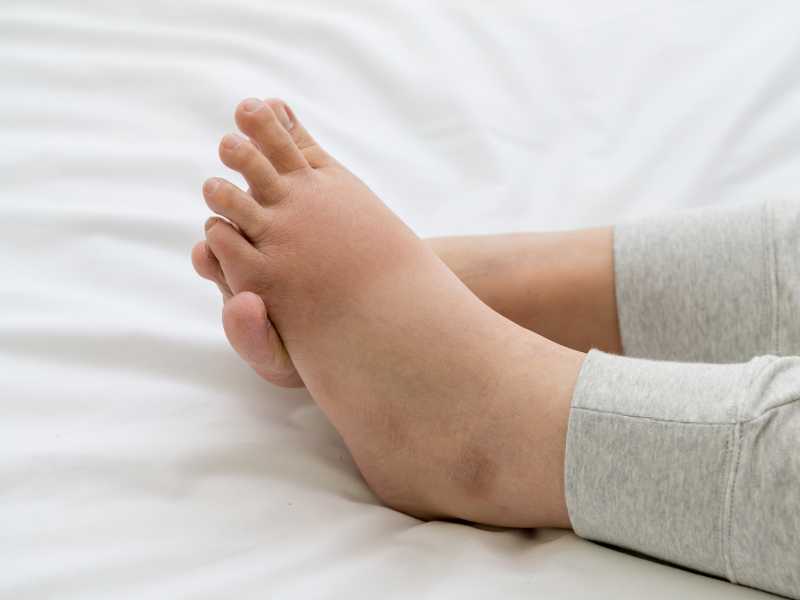 Elevation: Elevate your legs whenever possible to reduce swelling.
Elevation: Elevate your legs whenever possible to reduce swelling.
Hydration: Drink plenty of water to help flush excess fluids from your body.
Compression Stockings: Wearing compression socks can help reduce swelling in the legs and feet.
11. Urinary Incontinence
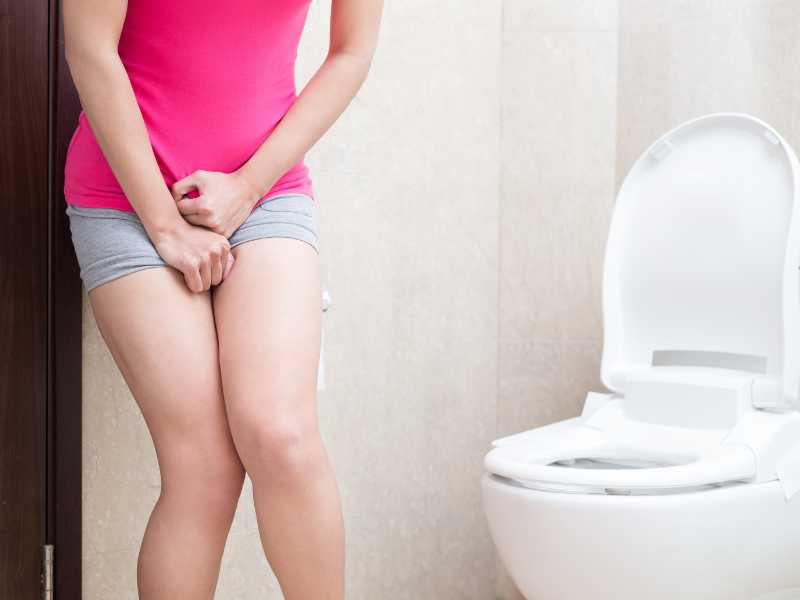 Kegel Exercises: These exercises strengthen the pelvic floor muscles, which can help regain bladder control.
Kegel Exercises: These exercises strengthen the pelvic floor muscles, which can help regain bladder control.
To do Kegels, contract the muscles you use to stop urination, hold for a few seconds, and then release. Repeat several times a day.
Bladder Training: Gradually increase the time between bathroom visits to help regain control.
Consult a Healthcare Provider: If incontinence persists, your doctor may recommend physical therapy or other treatments.
12. Reduced Libido
 Communication: Have open and honest conversations with your partner about your feelings and needs. Understanding and support from your partner can help ease the pressure.
Communication: Have open and honest conversations with your partner about your feelings and needs. Understanding and support from your partner can help ease the pressure.
Take Your Time: Give yourself time to heal physically and emotionally. There’s no rush to resume sexual activity; it’s essential to wait until you feel ready.
Consult a Healthcare Provider: If concerns about libido persist, discussing them with a healthcare provider can provide additional guidance and reassurance.
They can also check for underlying issues, such as hormonal imbalances.
Know that, every woman’s postpartum experience is unique, and what’s normal for one person may not be for another. It’s important to listen to your body and seek medical advice if you have any concerns.
HOW LONG DO COMMON POSTPARTUM SYMPTOMS TYPICALLY LAST.
1. Fatigue
 Fatigue can persist for several weeks to months, depending on factors like the baby’s sleep patterns and the mother’s ability to rest.
Fatigue can persist for several weeks to months, depending on factors like the baby’s sleep patterns and the mother’s ability to rest.
It often improves as the baby starts to sleep for longer stretches at night.
2. Breast Engorgement
 Engorgement is most intense in the first few days to a week postpartum as milk production stabilizes.
Engorgement is most intense in the first few days to a week postpartum as milk production stabilizes.
It usually resolves as the breastfeeding routine becomes established.
3. Perineal Pain
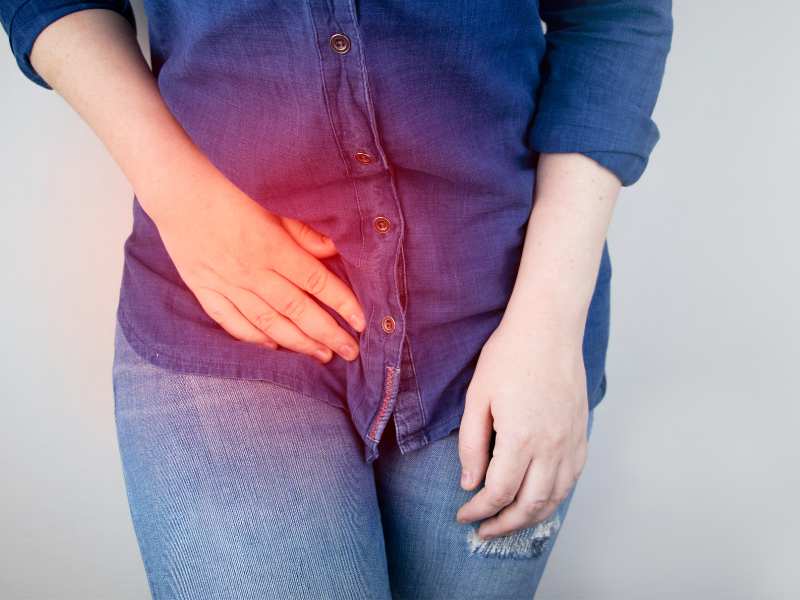 Pain from perineal tears, episiotomy, or general soreness typically improves within the first two weeks postpartum.
Pain from perineal tears, episiotomy, or general soreness typically improves within the first two weeks postpartum.
Complete healing can take up to six weeks, depending on the severity.
4. Postpartum Bleeding (Lochia)
 Lochia generally lasts about four to six weeks. The flow decreases over time, transitioning from red to pink, brown, and finally yellowish-white.
Lochia generally lasts about four to six weeks. The flow decreases over time, transitioning from red to pink, brown, and finally yellowish-white.
5. Uterine Cramps (Afterpains)
 Afterpains are most common in the first few days postpartum and usually diminish within a week.
Afterpains are most common in the first few days postpartum and usually diminish within a week.
6. Breastfeeding Challenges
 Initial breastfeeding challenges can arise in the first few weeks postpartum.
Initial breastfeeding challenges can arise in the first few weeks postpartum.
Many mothers find that these issues improve within the first month as they and their baby adjust.
7. Constipation
 Postpartum constipation can last for a few days to a week. It generally resolves with dietary changes, hydration, and possibly stool softeners.
Postpartum constipation can last for a few days to a week. It generally resolves with dietary changes, hydration, and possibly stool softeners.
8. Hemorrhoids
 Hemorrhoids can last for a few days to several weeks. They often improve with home treatment and dietary changes.
Hemorrhoids can last for a few days to several weeks. They often improve with home treatment and dietary changes.
9. Mood Swings and Baby Blues
 The baby blues, characterized by mood swings and emotional sensitivity, typically last for up to two weeks postpartum.
The baby blues, characterized by mood swings and emotional sensitivity, typically last for up to two weeks postpartum.
If these feelings persist or worsen, it may be a sign of postpartum depression.
10. Postpartum Depression
 Postpartum depression can develop at any time within the first year after childbirth. Its duration varies but often requires treatment with therapy, medication, or a combination of both.
Postpartum depression can develop at any time within the first year after childbirth. Its duration varies but often requires treatment with therapy, medication, or a combination of both.
11. Swollen Hands and Feet
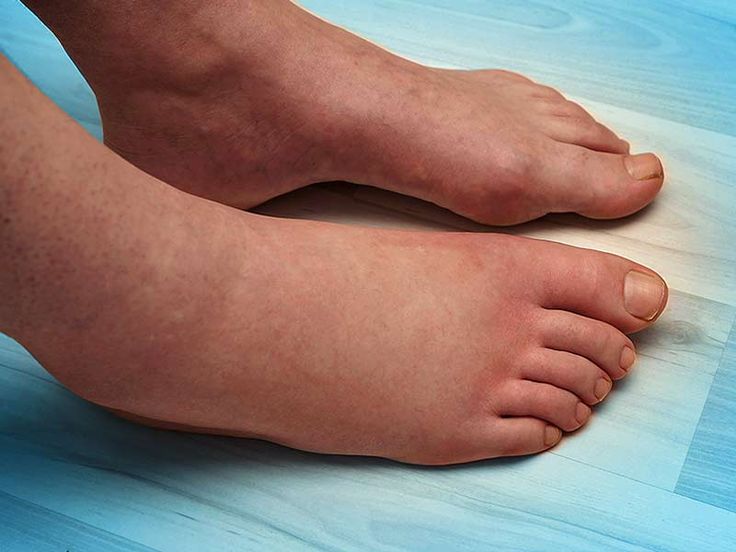
The swelling usually decreases within the first week postpartum as the body sheds excess fluid. However, mild swelling may persist for a few weeks.
12. Urinary Incontinence
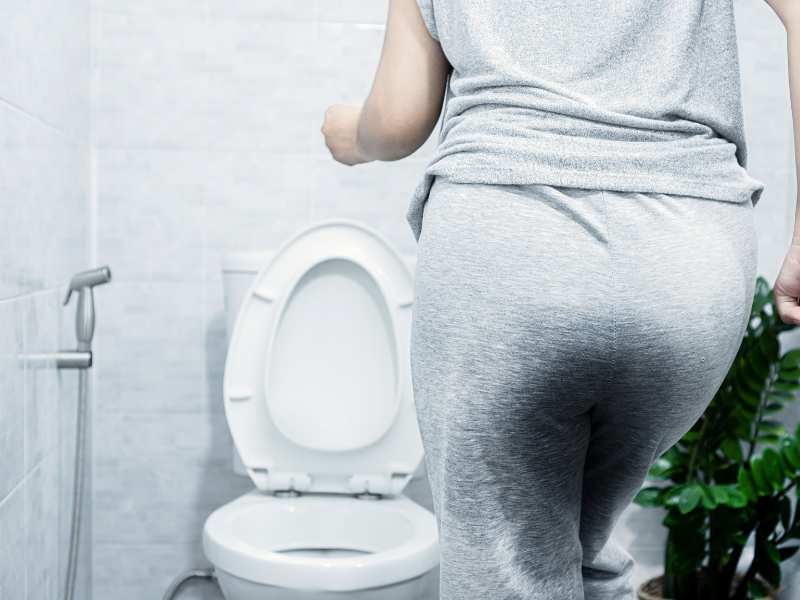 Mild incontinence may improve within a few weeks to months as pelvic floor muscles recover. If symptoms persist beyond six months, it may require medical intervention.
Mild incontinence may improve within a few weeks to months as pelvic floor muscles recover. If symptoms persist beyond six months, it may require medical intervention.
13. Reduced Libido
 A reduced libido can last for several weeks to months postpartum. Factors like hormonal changes, fatigue, and the physical recovery process can all play a role.
A reduced libido can last for several weeks to months postpartum. Factors like hormonal changes, fatigue, and the physical recovery process can all play a role.
It often improves as the mother adjusts to her new role and routines.
These timelines are general estimates, and the duration of symptoms can vary for each individual.
New mothers need to communicate with their healthcare providers about any symptoms they’re experiencing, especially if they persist or worsen.
SIGNS OF POSTPARTUM DEPRESSION AND WHEN TO SEEK HELP
 1. Persistent Sadness or Low Mood
1. Persistent Sadness or Low Mood
Feeling overwhelmingly sad, hopeless, or empty most of the time.
2. Loss of Interest in Activities
A lack of interest or pleasure in activities that were previously enjoyable, including spending time with the baby.
3. Changes in Appetite or Weight
Significant weight loss or gain unrelated to pregnancy, or changes in appetite.
4. Sleep Disturbances
Difficulty falling asleep, staying asleep, or sleeping excessively, even when the baby is asleep.
5. Fatigue or Loss of Energy
Feeling constantly tired or lacking energy, which is more than just the normal exhaustion of new parenthood.
6. Feelings of Guilt or Worthlessness
Intense feelings of guilt, worthlessness, or inadequacy as a mother.
7. Difficulty Concentrating
Trouble focusing, remembering things, or making decisions.
8. Irritability or Anger
Feeling unusually irritable, angry, or resentful.
9. Anxiety or Panic Attacks
Experiencing intense anxiety, worry, or panic attacks.
10. Thoughts of Harming Yourself or Your Baby
Experiencing thoughts of harming yourself or your baby is a critical sign that immediate help is needed.
11. Withdrawal from Family and Friends
Avoiding social interactions and withdrawing from family and friends.
WHEN TO SEEK HELP
 1. Persistent Symptoms Beyond Two Weeks
1. Persistent Symptoms Beyond Two Weeks
If feelings of sadness, anxiety, or any other symptoms of postpartum depression last longer than two weeks, it’s time to seek professional help.
The “baby blues” are common and usually resolve within this period, but PPD is more persistent and requires attention.
2. Severe Symptoms
 If the intensity of your symptoms is affecting your ability to function daily, care for yourself, or care for your baby, you should seek help. This includes severe mood swings, extreme irritability, or overwhelming fatigue.
If the intensity of your symptoms is affecting your ability to function daily, care for yourself, or care for your baby, you should seek help. This includes severe mood swings, extreme irritability, or overwhelming fatigue.
3. Thoughts of Self-Harm or Harm to the Baby
 If you have thoughts of harming yourself or your baby, seek immediate help. This is a medical emergency, and you should contact a healthcare provider, go to the nearest emergency room, or call emergency services right away.
If you have thoughts of harming yourself or your baby, seek immediate help. This is a medical emergency, and you should contact a healthcare provider, go to the nearest emergency room, or call emergency services right away.
4. Loss of Interest or Pleasure in Life
 If you find that you have lost interest in activities you used to enjoy, including spending time with your baby, and this persists, it may be a sign of postpartum depression.
If you find that you have lost interest in activities you used to enjoy, including spending time with your baby, and this persists, it may be a sign of postpartum depression.
5. Excessive Anxiety or Panic Attacks
 If you are experiencing intense anxiety, constant worry, or panic attacks that interfere with your daily life, it’s important to consult a healthcare professional.
If you are experiencing intense anxiety, constant worry, or panic attacks that interfere with your daily life, it’s important to consult a healthcare professional.
6. Inability to Bond with the Baby
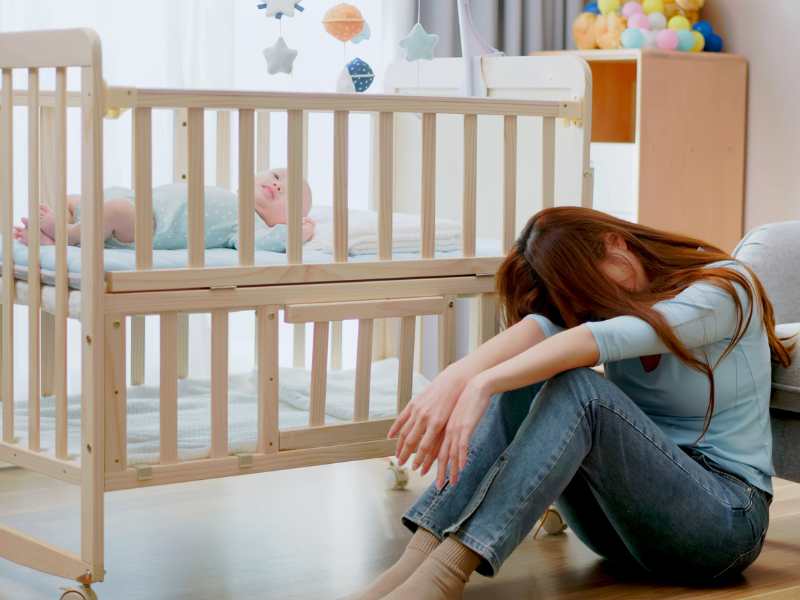 If you are struggling to bond with your baby or feel indifferent towards them, this is a serious symptom that warrants professional help.
If you are struggling to bond with your baby or feel indifferent towards them, this is a serious symptom that warrants professional help.
7. Withdrawal from Family and Friends
 If you find yourself withdrawing from social interactions, avoiding family and friends, or feeling isolated, it may be time to seek support.
If you find yourself withdrawing from social interactions, avoiding family and friends, or feeling isolated, it may be time to seek support.
8. Unresolved “Baby Blues”
 If what you initially thought were “baby blues” do not resolve after two weeks or become more intense, it’s advisable to seek help.
If what you initially thought were “baby blues” do not resolve after two weeks or become more intense, it’s advisable to seek help.
Sailing the postpartum period can be a challenging and transformative experience for new mothers. The physical and emotional changes that accompany childbirth are natural but can sometimes be overwhelming.
Recognizing the common symptoms of the postpartum period and understanding how to manage them can empower mothers to take proactive steps toward recovery and well-being.
It is key to remember that each woman’s journey is unique, and there is no one-size-fits-all approach to postpartum care. Seeking help when symptoms persist, worsen, or become unmanageable is crucial.
Whether it’s reaching out to healthcare providers, mental health professionals, or support groups, there are many resources available to support mothers during this time.
Postpartum depression and other postpartum symptoms are not a reflection of one’s capabilities as a mother. They are medical conditions that can and should be addressed with compassion and understanding.
By focusing more on self-care and seeking support, mothers can ensure a healthier and more fulfilling transition into this new phase of life.
Taking care of yourself is not only vital for your well-being but also for the well-being of your baby and family. You are not alone, and there is help available.
This post showed you 12 common symptoms experienced during the postpartum period and how to manage them.
|
ReplyForward |